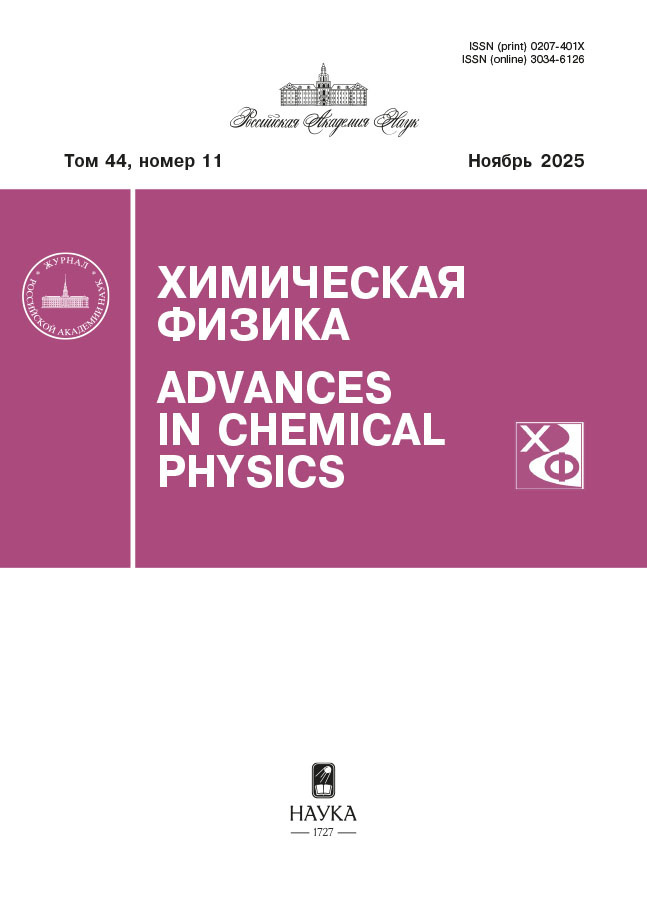Artificial blood vessels based on Russian fluoropolymers: pilot study
- Authors: Kukartseva O.V.1,2, Buznik V.M.3, Melnik E.Y.1,2, Mishanin A.I.4, Golovkin A.S.4, Bolbasov E.N.1,2
-
Affiliations:
- National Research Tomsk Polytechnic University
- Zueva Institute of Atmospheric Optics Siberian Branch, Russian Academy of Sciences
- National Research Tomsk State University
- Almazov National Medical Research Center, Ministry of Health of the Russian Federation
- Issue: Vol 44, No 11 (2025)
- Pages: 67-75
- Section: Chemical physics of polymeric materials
- URL: https://rjsocmed.com/0207-401X/article/view/696401
- DOI: https://doi.org/10.7868/S0207401X25110082
- ID: 696401
Cite item
Abstract
Artificial blood vessels made from fluoropolymer using electrospinning have high biocompatibility. They have unique combinations of strength, chemical resistance, and open interconnected porosity. This provides favourable conditions for endothelialization. The aim of this study is to investigate the structures and properties of these artificial vessels, formed from Russian fluoropolymer materials such as poly(tetrafluoroethylene), copolymers of vinidene fluoride and tetraflouroethylene, and polyvinylidenefluoroide. Depending on the fluoropolymer used, structural characteristics of vessel walls, surface free energies, strengths, elongations, and interactions with human mesenchymal stem cells are investigated. It has been demonstrated that a copolymer of vinidenedifluoride with tetraflouroethylene represents the most promising material for vessel manufacturing using electrospinning technology.
About the authors
O. V. Kukartseva
National Research Tomsk Polytechnic University; Zueva Institute of Atmospheric Optics Siberian Branch, Russian Academy of Sciences
Email: Ftoroplast@tpu.ru
Tomsk, Russia; Tomsk, Russia
V. M. Buznik
National Research Tomsk State University
Email: Ftoroplast@tpu.ru
Tomsk, Russia
E. Y. Melnik
National Research Tomsk Polytechnic University; Zueva Institute of Atmospheric Optics Siberian Branch, Russian Academy of Sciences
Email: Ftoroplast@tpu.ru
Tomsk, Russia; Tomsk, Russia
A. I. Mishanin
Almazov National Medical Research Center, Ministry of Health of the Russian Federation
Email: Ftoroplast@tpu.ru
Saint Petersburg, Russia
A. S. Golovkin
Almazov National Medical Research Center, Ministry of Health of the Russian Federation
Email: Ftoroplast@tpu.ru
Saint Petersburg, Russia
E. N. Bolbasov
National Research Tomsk Polytechnic University; Zueva Institute of Atmospheric Optics Siberian Branch, Russian Academy of Sciences
Author for correspondence.
Email: Ftoroplast@tpu.ru
Tomsk, Russia; Tomsk, Russia
References
- Kumar V. A., Brewster L. P., Caves J.M., Chaikof E.L. // Cardiovasc. Eng. Technol. 2011. V. 2. P. 137. https://doi.org/10.1007/s13239-011-0049-3
- Kochervinskii V.V., Gradov O.V., Gradova M.A. // Russ. Chem. Rev. 2022. V. 91. №11. RCR5037. https://doi.org/10.57634/RCR5037
- Durán-Rey D., Sánchez-Rumboet C., Brito-Pereira R. et al. // British J. Surg. 2025. V. 112. Issue Suppl. 2. https://doi.org/10.1093/bjs/znae322.012
- Wenbin Sun, Chuang Gao, Huazhen Liu et al. // ACS Biomat. Sci. Eng. 2024. V.10. № 5. P. 2805. https://doi.org/10.1021/acsbiomaterials.3c01989
- Zhou Siqi, Liu Yulu, Yu Xueke et al. // ACS Appl. Bio Mater. 2024. V.7. № 10. P. 6985. https://doi.org/10.1021/acsabm.4c01098
- Mel’nik E.Y., Martynov G.A., Lozovskii M.S. et al. // Biomed. Eng. 2025. V. 58. P. 397. https://doi.org/10.1007/s10527-025-10443-1
- Melnik E., Stankevich K., Zinovyev A. et al. // J. Fluor. Chem. 2022. V. 264. P. 110062 https://doi.org/10.1016/j.jfluchem.2022.110062
- Goreninskii S., Yuriev Y., Runts A. et al. // Polymers. 2024. V. 16. P. 3524. https://doi.org/10.3390/polym16243524
- Shershnev I.V., Kopylov A.S., Cherkasova A. V., Solovieva A.B. // Russ. J. Phys. Chem. B. 2022. V. 16. № 7. P. 1277. https://doi.org/10.1134/S1990793122070156
- Dongfang Wang, Yiyang Xu, Qian Li, Lih-Sheng Turng // J. Mater. Chem. B. 2020. V. 8. P. 1801. https://doi.org/10.1039/C9TB01849B
- Vorobyev A. O., Kulbakin D. E, Chistyakov S. G. et al. // Chem. Phys. Polym. Mater. 2024. V. 17 P. 1316. https://doi.org/10.1134/S1990793123060106
- Hamed Amani, Hamidreza Arzaghi, Mehrdad Bayandori et al. // Adv. Mater. Interfaces. 2019. V. 6. № 13. P. 1900572. https://doi.org/10.1002/admi.201900572
Supplementary files











